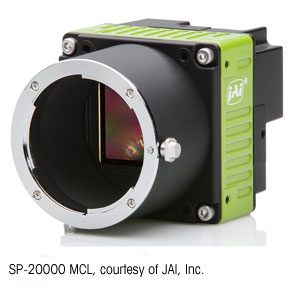
Color machine vision has its challenges.
Systems can produce three times the data (or less than one-third the resolution) of a monochrome camera solution. Color can introduce more potential sources for imaging errors, more complexity, more cost, and require careful engineering that reduces the system’s flexibility to deal with lines that make products of varying shape, colors, and size. In fact, if designers can find a way to use filters and lighting to measure a colored area using monochrome cameras, they usually do.
However, for many applications ranging from electronic manufacturing to printing and food processing, color is the only way to solve the problem. Let’s look at some of the considerations a system design needs to take into account to create a successful color machine vision solution, including careful matching of camera, optics, and light source.
Color aberrations come in two flavors: axial, where the different wavelengths of light cause each color to focus on a different focal plane or distance from the optic, as well as transverse or longitudinal distortion, where a magnification causes different colors to focus on different points on the same focal plane even when they originate from the same point in front of the camera. Both effects can reduce contrast or produce halo effects in the image. While an electronics manufacturer will likely want the fastest possible frame rate and therefore ask for a high-resolution, high-frame-rate single-color camera solution such as JAI’s SP-20000 with 20 megapixel (MP) CMOSIS full-frame sensor (43.3 mm diagonal), the designer needs to be aware of potential lateral distortion and correct the problem through optical or software methods.
refer to:http://www.visiononline.org/vision-resources-details.cfm/vision-resources/Is-Your-Machine-Vision-System-Color-Blind/content_id/4333
